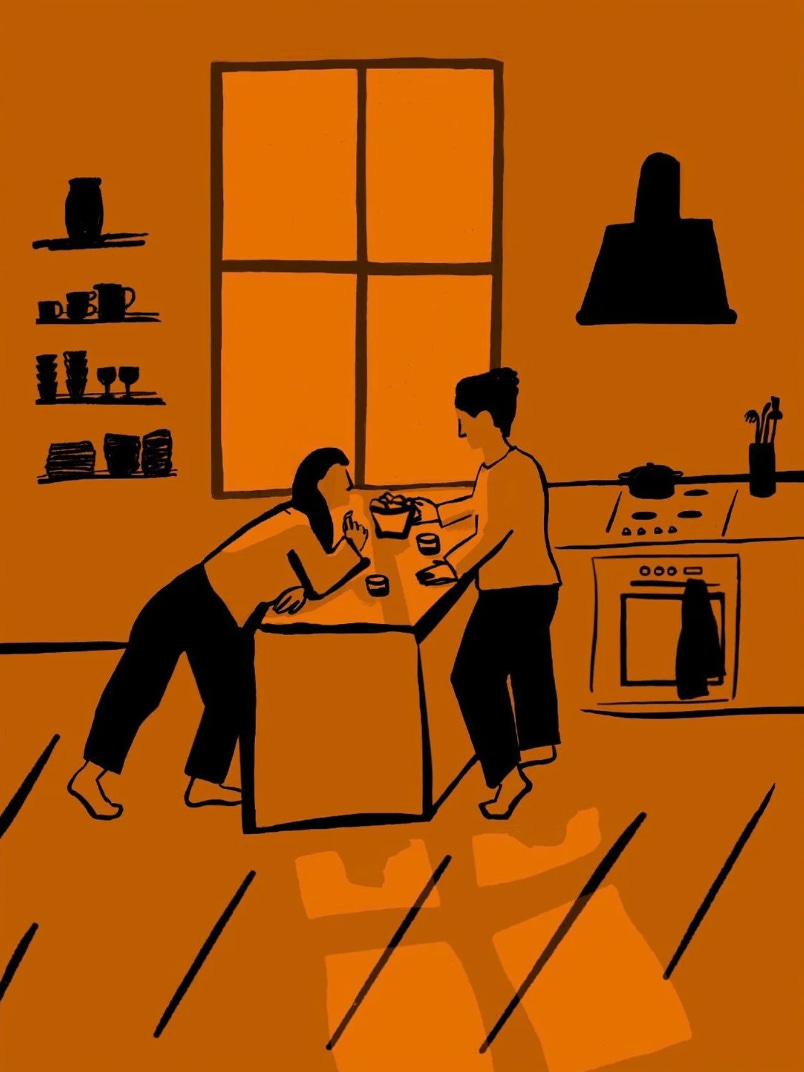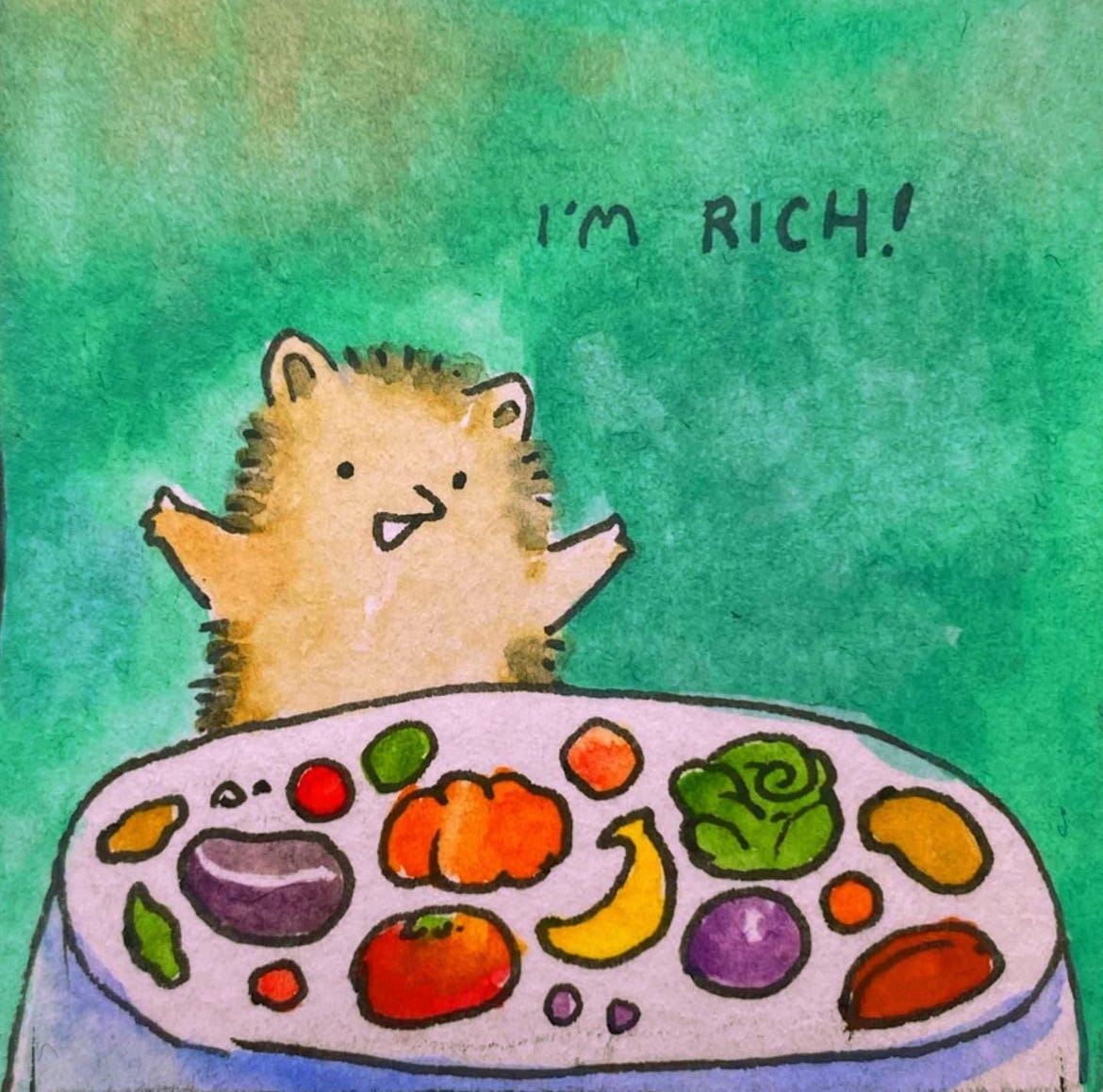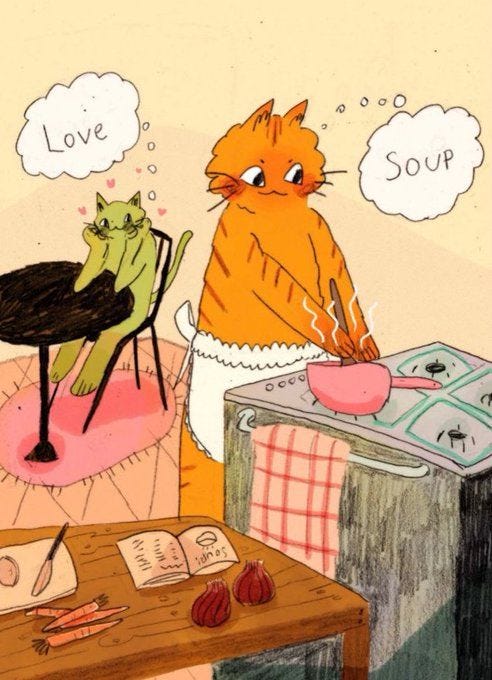Happy Valentine’s Day, Interested Eaters! While the holiday has become synonymous with public displays of romantic love, here at Food People, we’re all about promoting love through community. So today, we’re celebrating our food community—from our go-to farmers market vendor, to our local barista, to you, Interested Eater!
As a sweet treat, this week we’re joined by Tessa Lechleider, who explores how food is an expression of love. Tessa holds a B.A. in Food Justice and Environmental Studies from New York University and she currently works in corporate partnerships at City Harvest, New York’s first and largest food rescue organization.
In one of my first memories, I am standing on a wooden chair in the kitchen of my childhood home, holding a bag of dried green lentils, watching my Mimi cook. As I stood there, feeling the weight of the lentils in my hand, I observed as she sautéed garlic in olive oil as the base for her homemade Sunday sauce.
My entire childhood followed this narrative: I was always in the kitchen, alongside my Mimi, my mom, my dad, my aunts and uncles, my cousins, my brothers. Food has always been integral to my family and how we bond. It is how we display our love for one another and, as the flavors in Mimi’s Sunday sauce developed, so did my understanding of these priorities. Not only was she invested in demonstrating for me the ways to understand, refine, and personalize recipes, but she was equally as invested in expressing her love for me and giving me the tools to share that love with others.
In 1992, Dr. Gary Chapman wrote a book that revolutionized the way many think about love. In The 5 Love Languages: The Secret to Love That Lasts, he identified five main categories through which people give and receive love: words of affirmation, quality time, receiving gifts, acts of service, and physical touch.1
His ultimate takeaway through research and anecdotal experience is that people feel and convey those feelings differently and, in order to fully satisfy one another’s needs, we must understand the languages our people are receptive to. While Dr. Chapman referred to romantic love throughout his book, over time the notion of love languages entered the cultural zeitgeist and translated into platonic and familial relationships.
As my family taught me, it seems Dr. Chapman omitted one of the most important love languages: food. Food allows people to communicate in a way that does not rely on action or special words. It is one that transcends cultures, communities, and geography. It brings together people who seemingly have nothing in common.
Food has always been the primary means for me to connect with my peers and as I grew up, it gave me a lens through which to observe and understand the world. Whether consciously or not, I constantly find myself gravitating towards food people.
My community is built upon making homemade mac and cheese with my friend Jon in our disheveled college apartment; discussing the political implications of our food systems with my coworkers; devouring pickle cream cheese and everything bagels in my friend Kristen’s backyard every summer; trying new restaurants across New York City with my childhood friends; and grabbing a coffee each morning with my roommate Zoe.
Marcie Cohen Ferris, in The Edible South, writes of her relationship with food:
“In the most basic way, food catches my attention because I know what it feels like to eat something delicious, to be hungry, to dislike the taste or texture of a food, to both struggle with food and be enchanted by food... It is a sensual experience, because, in food, an emotional world comes into view—a place of color, imagined tastes, interaction, and memory”.2
As Ferris outlines, food is complex. It enhances our world and provides us with a framework to view everyday experiences—with windows to the past and to the future, with sustenance and flavor and excitement, with connection and community and togetherness.
Food also challenges us. It forces us to think critically about the pathways it takes to get to our plates; it pushes us to confront the gruesome histories of our countries; it necessitates the observation of today’s society and a critical analysis into the ways our food systems are structured.
But, perhaps most simply, food is a display of love.
So, with all that being said, I will leave you with a 101 guide on How to Love a Food Person:
Make them your favorite meal. Tell them why it’s your favorite and why you decided to make it for them.
Prepare soup for them when they’re feeling sick.
Cook something new together. Nothing tests a relationship more than sharing a kitchen!
Give them a sweet treat for no good reason other than you wanted to make them smile.
Blast music and start a kitchen dance party!
Brew them a cup of tea to wind down after a long day.
Share your favorite food publication with them (wink wink ;)).







